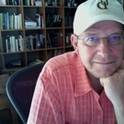Article
COVID-19 and visitation to Central Park, New York City
PLoS ONE
(2023)
Abstract
Central Park is an iconic feature of New York City, which was the first and one of the hardest
hit cities in the United States by the Coronavirus. State-level stay-at-home order, raising
COVID-19 cases, as well as the public’s personal concerns regarding exposure to the virus,
led to a significant reduction of Central Park visitation. We utilized extensive cellphone tracking
data to conduct one of the pioneering empirical studies assessing the economic impact
of COVID-19 on urban parks. We integrated the difference-in-difference (DID) design with
the recreation-demand model. The DID design aids in identifying the causal impacts, controlling
for unobservable factors that might confound the treatment effects of interest. Concurrently,
the recreational demand model examines the driving factors of visitation changes
and enables us to estimate the welfare changes experienced by New York City’s residents.
Our findings shine a light on the substantial, yet often overlooked, welfare loss triggered by
the pandemic. The analysis indicates that the pandemic resulted in a 94% reduction in visitation,
corresponding to an annual consumer surplus loss of $450 million. We noted a rebound
in visitation following the initial outbreak, influenced by shifts in government policy, weather
conditions, holiday periods, and personal characteristics.
Keywords
- Recreation,
- COVID19,
- Central Park,
- Urban Parks,
- Travel Cost Model
Disciplines
Publication Date
Fall September 13, 2023
Citation Information
Weizhe Weng, Lingxiao Yan, Kevin J. Boyle and George Parsons. "COVID-19 and visitation to Central Park, New York City" PLoS ONE Vol. 18 Iss. 9 (2023) Available at: http://works.bepress.com/george_parsons/69/
